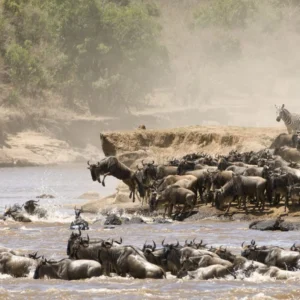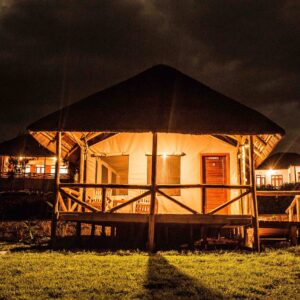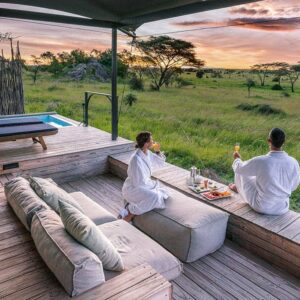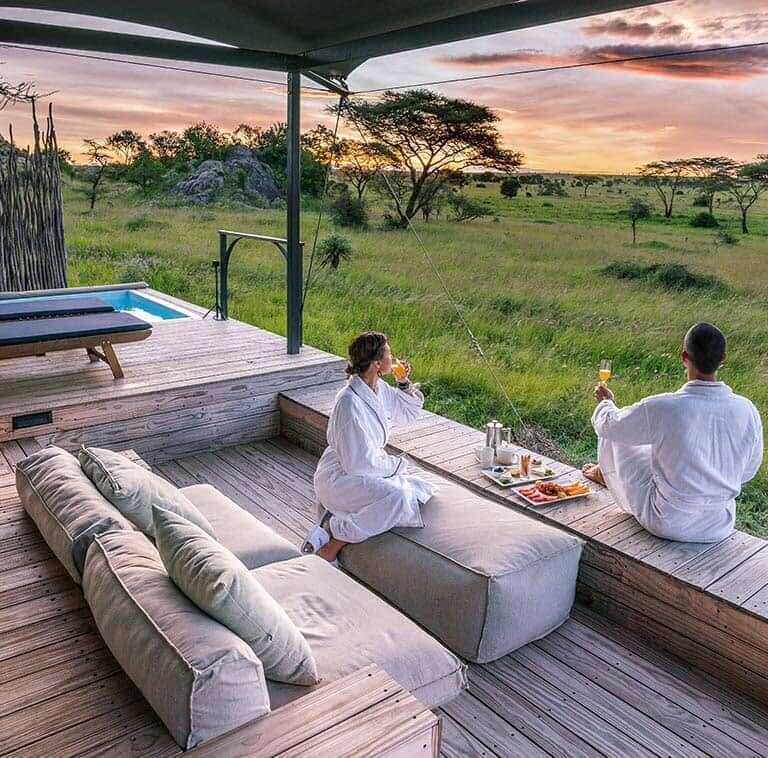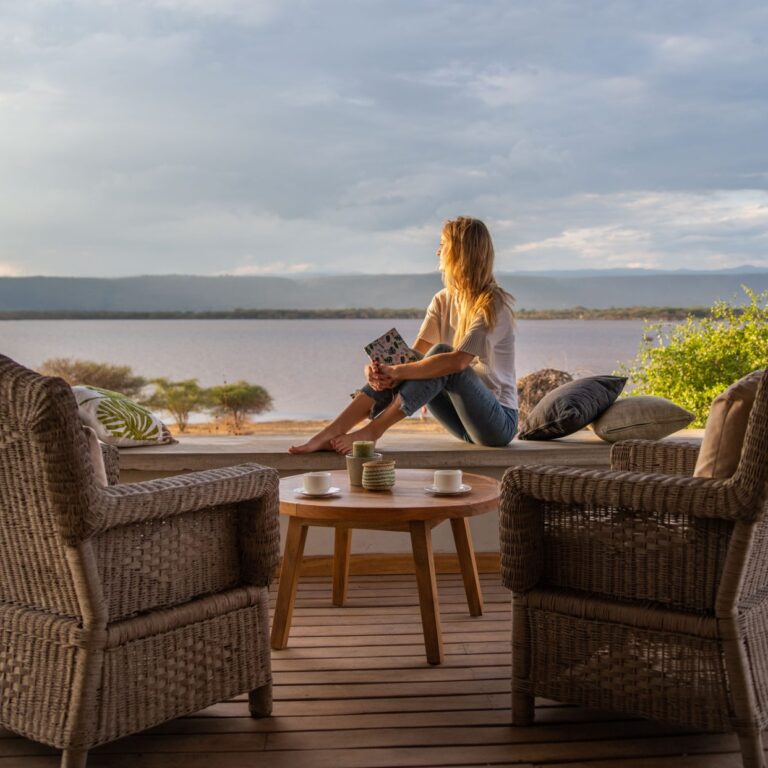Capturing the Soul of the Wild: 10 Tips to Elevate Your Wildlife & Nature Photography in Tanzania (and Beyond)-The allure of Tanzania, especially the breathtaking landscapes and abundant wildlife surrounding Arusha, ignites a primal urge to capture its beauty through the lens. Whether you’re witnessing the Great Migration in the Serengeti, marveling at the elephants of Tarangire, or exploring the lush forests of Arusha National Park, your camera becomes an extension of your eye, a tool to preserve fleeting moments of wonder. But transforming snapshots into captivating photographs that truly convey the soul of the wild requires more than just pointing and shooting. Here are 10 essential tips to elevate your wildlife and nature photography during your Tanzanian adventure (and any bush experience):
1. Master the Art of Patience: The Photographer’s Greatest Virtue
Wildlife photography, particularly in a place as dynamic as Tanzania, demands patience above all else. The most extraordinary moments – a tender interaction between a mother and her cub, a predator stalking its prey, a bird displaying its vibrant plumage – often unfold when you least expect them. Resist the urge to rush from sight to sight. Instead, find a promising location, settle in, and observe. Let the scene unfold naturally. This patient approach, often practiced by seasoned photographers around Arusha waiting for the perfect light on Mount Meru or the ideal moment with local wildlife, is key to capturing truly exceptional images.
2. Understand Your Subject: Know Their Habits and Habitat
Truly compelling wildlife and nature photography goes beyond simply documenting what you see; it tells a story. To do this effectively, invest time in understanding your subjects. Learn about the behavior patterns of the animals you hope to photograph – their feeding times, social interactions, and preferred habitats. The more you know, the better you can anticipate their actions and position yourself for impactful shots. Before heading out on a game drive from Arusha, take the time to learn about the specific animals you’re likely to encounter in that park. Understanding the migratory patterns of birds around Lake Manyara, for instance, will significantly improve your bird photography. Check this: Top 10 Best Tanzania Photography Safari 2025/2026
3. Embrace the Golden Hours: The Magic of Light
Light is the lifeblood of photography, and the soft, warm light of sunrise and sunset – often referred to as the “golden hours” – is particularly magical for wildlife and nature. This gentle illumination bathes the landscape in a beautiful glow, enhances colors, and creates soft shadows that add depth and dimension to your subjects. Rise early for those misty morning shots of elephants in Tarangire or stay out until dusk to capture the silhouettes of giraffes against a fiery Serengeti sky. The difference in image quality during these times compared to the harsh midday sun is often dramatic. Many lodges around Arusha schedule early morning and late afternoon game drives specifically to take advantage of this optimal light.
4. Get Down Low: Changing Your Perspective
Most casual wildlife photography is taken from the height of a standing adult or a safari vehicle. While convenient, this perspective often lacks impact. Try getting down low to the eye level of your subject. This can create a more intimate connection with the animal, making it appear larger and more significant in the frame. It also helps to blur out distracting backgrounds. Safely lowering your camera (when permitted and guided by your experienced driver in Tanzania) can transform a simple portrait of a lion into a powerful and engaging image. Imagine the difference in photographing a ground hornbill at its eye level versus looking down on it from a vehicle.
5. Fill the Frame: Emphasize Your Subject
Don’t be afraid to get close to your subject (using your telephoto lens, of course, to maintain a safe and respectful distance). Filling the frame with your animal or element of nature eliminates distracting surroundings and forces the viewer to focus on the details, textures, and expressions that make your subject unique. A close-up of a leopard’s intense gaze in the Serengeti or the intricate patterns on a butterfly’s wing in Arusha National Park can be far more compelling than a wide shot with a tiny subject lost in the scene.
6. Master the Art of Selective Focus: Guiding the Viewer’s Eye
Using a wide aperture (low f-number like f/2.8 or f/4) creates a shallow depth of field, where your subject is sharp and the background is beautifully blurred (bokeh). This technique helps to isolate your subject and draw the viewer’s eye directly to it. Eliminating distractions and creating a more artistic and professional look are tips to improve your wildlife & nature photography. A sharp focus on a cheetah’s eyes against a soft, out-of-focus background in the Serengeti instantly elevates the image. Experiment with different apertures to see how they affect the depth of the field and the overall impact of your photograph.
7. Embrace Negative Space: Creating Visual Harmony
While filling the frame can be effective, don’t underestimate the power of negative space – the empty areas around your subject. Strategically using negative space can create a sense of calm, highlight the subject’s isolation, or imply movement tips to improve your wildlife & nature photography. A lone giraffe walking across the vast plains of Tarangire with plenty of sky above it can evoke a powerful feeling of solitude and the scale of the landscape.
8. Capture Behavior: Telling a Story Beyond a Portrait
While portraits of wildlife are appealing, images that capture behavior often tell a more compelling story. Look for interactions between animals, feeding, grooming, and playing tips to improve your wildlife & nature photography. Or even moments of stillness that reveal their character. A photograph of a mother elephant tenderly touching her calf in Tarangire or a group of baboons grooming each other in Arusha National Park offers a deeper insight into their lives and relationships. Anticipating and capturing these behavioral moments requires patience and keen observation.
9. Utilize Leading Lines and Framing: Creating Visual Pathways
In nature photography, look for natural leading lines – paths, rivers, fences, or even patterns in the landscape – that draw the viewer’s eye towards your subject. Similarly, use natural frames like tree branches, rock formations, or archways to border your subject and create a sense of depth and context. A winding path leading to Mount Meru in Arusha National Park or a lion framed by the branches of an acacia tree in the Serengeti can add significant visual interest to your composition.
10. Respect the Wild: Ethical Photography Above All Else
Above all else, remember that ethical considerations should always guide your wildlife and nature photography. Never put yourself or the animals at risk for a photograph. Maintain a safe and respectful distance, do not disturb their natural behavior, and never attempt to feed or lure wildlife. Support tour operators and guides in Tanzania who prioritize ethical practices and conservation. Your goal should be to capture the beauty of the wild without causing any harm or distress. The most rewarding photographs are those taken with respect and a genuine appreciation for the incredible natural world you are witnessing in Tanzania. Check this: Simple Tips to Improve Your Safari Photographs
What is the best camera for wildlife and nature photography? A DSLR or mirrorless camera with a fast autofocus system and the ability to shoot in RAW format is ideal. Look for cameras with a high frame rate for continuous shooting.
How do I avoid blurry photos of moving animals? Use a faster shutter speed (at least 1/1000) and continuous autofocus to keep moving animals sharp. Additionally, use burst mode to capture multiple frames in a short period.
Should I use a tripod for wildlife photography? Yes, a tripod is useful for stabilizing your camera, especially when shooting in low light or using heavy lenses. However, for action shots, a monopod or handheld shooting may be more effective.
How close can I get to wildlife for a good shot? Always keep a safe and respectful distance. Use a telephoto lens to get close-up shots without disturbing animals. The goal is to observe without interfering with their natural behavior. Check this: The Beginner’s Guide to Photographing an African Safari.
Can I take good wildlife photos without professional equipment? While professional gear helps, it’s not a requirement. A DSLR or mirrorless camera with a decent zoom lens can still capture great images. Focus on technique, composition, and patience.
How can I improve my photos in low-light conditions? Use a wide aperture (low f-stop), increase your ISO (while being mindful of noise), and use a fast shutter speed to compensate for low light.
What are the best times to photograph wildlife? Early mornings and late afternoons offer the best lighting (golden hour) and animals are often more active at these times. Check this: Wildlife Photography Tips for Your Next Tanzania Safari.
How can I get better at nature photography?
What are you looking for?
Plan accordingly. A good pair of hiking shoes or boots can go a long way
Get familiar with your camera’s settings
Bring the right equipment
You don’t need a fancy Nikon or Canon to shoot
Use the rule of thirds
Don’t get too close
Get a new perspective
Patience is key
How do you take better wildlife photos? Generally speaking, you’ll want a fast shutter speed to freeze the motion of moving animals. Try 1/250, 1/500, or even faster. Exactly how fast you need your shutter speed to be depends a lot on the type of animal you’re taking pictures of, the level of activity, and the length of your lens.
How can you make your photography better? Study the angle and direction of the lighting or look at their position relative to the subject. Ask yourself, “How did they get that shot?” Taking cues from photographers you admire is a great way to push yourself to improve. In time, your visual style will develop. Check this: Best Photography Tips for African Safari (Updated)
What are the settings for wildlife photography? Choose your widest aperture, your shutter speed is set to 1/focal length you’re shooting at, so for example 400mm, then your shutter is 1/400th, and if you’re on a moving boat, 2x the reciprocal, 1/800th at 400mm. Then your ISO should be auto.
What is the best time to photograph nature? Dawn and dusk (also known as the golden hours) offer the perfect lighting conditions for great landscape imagery. This is also the time to capture beautiful sky photos. Jeff Carlson notes, “Sometimes the better sunset happens after the sun goes down. Depending on the clouds, the sky can explode with color.
Best cameras for wildlife photography. For wildlife photography, cameras with fast autofocus systems, high burst rates, and powerful zoom lenses are highly recommended. The Nikon Z8 and Sony A1 (or A1 II) are frequently cited as top choices. Other excellent options include the Canon EOS R3, Panasonic Lumix GH6, and OM System OM-1 Mark II.
Wildlife photography equipment includes a DSLR or mirrorless camera best wildlife photography equipment with fast autofocus and high burst rate, paired with a telephoto lens (300mm or more) for distant subjects a professional wildlife photography equipment. A sturdy tripod or monopod ensures stability when used in wildlife photography equipment
camouflage gear helps blend into the surroundings. Extra batteries, memory cards, and a weather-sealed camera bag are essential for field durability wildlife photography equipment for beginners. Remote shutter releases and lens extenders enhance flexibility. High ISO performance and silent shooting modes are ideal for capturing animals without disturbance.
Wildlife photography clothing should be durable, weather-appropriate, and camouflaged to blend into natural surroundings, so it needs a budget wildlife photography setup. Neutral or earth-tone colors help avoid startling animals. Layered clothing allows for temperature control, while waterproof and windproof outerwear ensures comfort in harsh conditions check online wildlife photography equipment for sale. Quiet, non-rustling fabrics are crucial to avoid noise, waterproof boots provide support and protection in rough terrain. A wide-brim hat, gloves, and insect repellent clothing add extra protection. Pockets or gear vests are useful for carrying small essentials like batteries or memory cards.
By embracing outdoor photography equipment list these ten tips, you can significantly improve your wildlife and nature photography during your Tanzanian adventure and beyond. Remember that practice, patience, and a deep respect for your subjects are the cornerstones of capturing truly exceptional images that tell a story and preserve the soul of the wild. So, grab your camera, head out into the breathtaking landscapes surrounding Arusha and the vast wilderness of Tanzania, and start capturing the magic!

